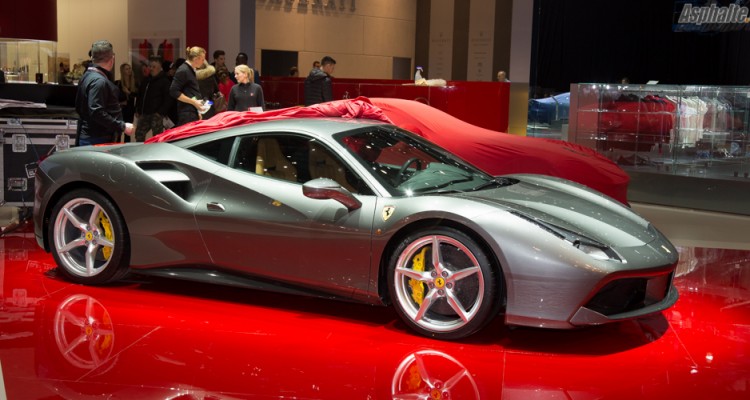Ferrari recently unveiled the Ferrari 488 Spider at the Frankfurt autoshow this week.
There’s no question about it, with a chassis from the gods, lightning fast shifts and loads of turbocharged torque, it’s an incredible car. It does however confirm a controversial trend; manual Ferrari’s are out and low-displacement turbo charged motors are in. If you’ve ever driven a manual Ferrari with their gorgeous gated shifters, you’ll know that this is utterly criminal. This news should however come as a surprise to no one. It’s a simple story of economics. The last manual Ferrari sold was the California. Out of the several thousand of them sold between 2008 and 2014, precisely three were manual. Really, when you’re producing the fastest dual-clutch transmission on the planet, is there a need for a manual Ferrari? That’s the question keeping gear-heads up at night.
.
We know that small displacement engines are becoming the norm. What is somewhat surprising is the use of a V6. Before you grab your pitchforks, remember that there were Ferraris many years ago running around with V6s; the Dino in particular. When asked if a V6 would make for a smaller, lighter Ferrari CEO Amedeo Felisa comically replied “Why would you reduce the engine and make a bigger car?” Based on that quote I’m going to hold my breath for a 2300lb Ferrari Dino with an amazing V6. It won’t happen, but one can dream.
.
The issue of driver involvement was also discussed. To paraphrase, Ferrari essentially explained that the days of building cars that are difficult to drive are over. The modern Ferrari is a car that can be enjoyed by anyone without a massive degree of skill. They’re current engineering challenge is now creating massively powerful cars that don’t restrict driver involvent, while making them easy enough for laymen to drive. Based on that, I’ll leave you with this question; should exotic cars be easy to drive?

